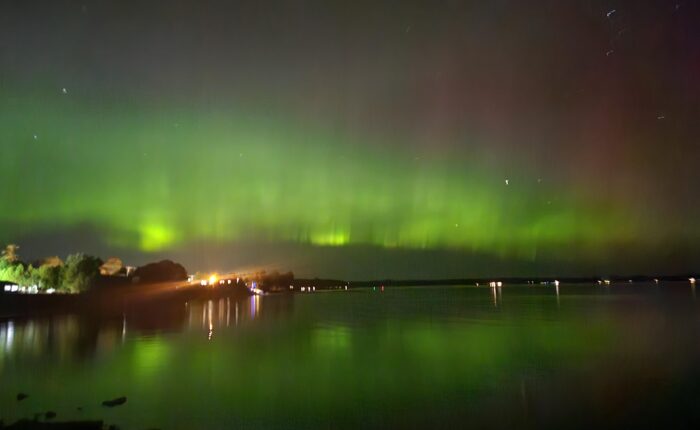On the western edge of Wisconsin’s Door Peninsula, Peninsula State Park stands as a testament to the enduring relationship between humans and the natural world. For over a century, this 3,776-acre sanctuary has captivated visitors with its dramatic limestone bluffs, verdant forests, and eight miles of pristine shoreline along Green Bay. As one of Wisconsin’s most beloved state parks, Peninsula offers a window into both the geological history that shaped the Great Lakes region and the cultural heritage of those who have called this land home.
The park’s story begins long before its official establishment in 1909. The limestone bedrock that forms its dramatic cliffs and shapes its landscape was deposited more than 400 million years ago during the Silurian period when a shallow tropical sea covered what is now the American Midwest. The subsequent millennia saw these ancient sea beds lifted and carved by glacial forces, creating the distinctive peninsula that juts into the waters of Green Bay. The Niagara Escarpment, a geological feature that extends from New York through Ontario and Wisconsin, finds one of its most dramatic expressions in the towering bluffs of Peninsula State Park, where limestone cliffs rise up to 150 feet above the waterline.
Indigenous peoples recognized the peninsula’s unique qualities thousands of years before European settlement. Archaeological evidence reveals that the Menominee and Potawatomi, among others, established seasonal settlements along these shores, harvesting the abundant fish and gathering plants from the diverse ecosystems. Effigy mounds within the park boundaries stand as silent witnesses to these earlier inhabitants and their spiritual connection to the land. Today, these sacred sites receive protection and recognition as important cultural heritage resources.
The park’s European history began in earnest with the construction of the Eagle Bluff Lighthouse in 1868, a structure that still stands as one of the park’s most recognizable landmarks. This sturdy limestone building guided ships through the sometimes treacherous waters of Green Bay for decades, playing a crucial role in the development of maritime commerce throughout the region. Today, the restored lighthouse operates as a museum, allowing visitors to step back in time and experience the life of 19th-century lighthouse keepers who maintained this vital navigational aid.
Peninsula State Park’s establishment in the early 20th century coincided with the Progressive Era’s conservation movement, championed in Wisconsin by figures like John Muir and Aldo Leopold. The park represented a forward-thinking approach to land management, preserving this unique landscape for public recreation rather than private development. This vision has proven prescient, as the park now serves as the crown jewel in Door County’s tourism economy, drawing over a million visitors annually who contribute significantly to local businesses and communities.
The ecological diversity of Peninsula State Park cannot be overstated. Within its boundaries, visitors encounter multiple distinct ecosystems, each supporting its own community of plants and animals. The northern hardwood forests host majestic sugar maples, American beech, and yellow birch, creating an unforgettable canopy of color during autumn months. Along the shoreline, white cedar trees cling tenaciously to limestone outcroppings, some specimens exceeding 200 years in age. Wetland areas support specialized plant communities, including rare orchid species that botanists travel great distances to observe.
This diversity of habitats supports an equally impressive array of wildlife. The park serves as an important stopover for migratory birds, with over 170 species documented within its boundaries. Birdwatchers routinely spot warblers, thrushes, and waterfowl during spring and fall migrations. White-tailed deer move gracefully through the forest understory, while red foxes hunt in meadow areas. The waters surrounding the peninsula teem with fish, including smallmouth bass, northern pike, and salmon, attracting anglers throughout the fishing season. Perhaps most remarkably, the park provides critical habitat for the endangered Hine’s emerald dragonfly, a species whose continued existence depends on the preservation of specialized wetland environments found within the park.
For recreational enthusiasts, Peninsula State Park offers an unparalleled variety of activities throughout the year. Summer visitors flock to Nicolet Bay Beach for swimming and sunbathing or launch watercraft from one of four boat launches to explore the coastline from a different perspective. The park’s extensive trail system accommodates hikers of all abilities, from leisurely strolls along the 10-mile Sunset Trail to more challenging routes ascending to panoramic viewpoints at Eagle and Sven’s Bluffs. Mountain bikers navigate over 12 miles of dedicated off-road trails, while golfers test their skills at the scenic 18-hole Peninsula Golf Course, one of the most beautiful public courses in the Midwest.
As daylight fades, many visitors gather at the Northern Sky Theater, an outdoor performance venue nestled among the trees where professional actors have performed original musical productions since 1970. This unique cultural institution exemplifies how the park seamlessly integrates natural and cultural experiences, enriching visitors’ connections to this special place.
When winter blankets the landscape with snow, Peninsula State Park transforms rather than hibernates. Cross-country skiers glide along 16 miles of groomed trails, while snowshoers forge their own paths through silent, snow-covered forests. Ice fishing shanties appear on the frozen bay, and sledding hills echo with the laughter of children. This year-round accessibility ensures that the park remains a vital community resource regardless of season.
The camping experience at Peninsula State Park deserves special mention, as it represents one of the most sought-after outdoor accommodations in the Midwest. The park’s five campgrounds offer over 450 sites, ranging from rustic tent spaces to modern facilities with electrical hookups. Generations of families have established traditions around annual camping trips to Peninsula, creating memories that span decades and foster deep connections to this landscape. The nightly symphony of waves lapping against the shore, wind whispering through pine boughs, and distant lighthouse beams sweeping across the water creates an atmosphere that visitors carry with them long after they depart.
Peninsula State Park faces challenges common to many popular natural areas in the 21st century. Balancing recreational access with conservation priorities requires thoughtful management and adequate resources. Climate change threatens to alter the composition of forest communities and increase shoreline erosion during extreme weather events. Invasive species like phragmites and garlic mustard compete with native plants, potentially disrupting ecological relationships established over millennia. Yet the park’s management team, supported by an active friends group and dedicated volunteers, works diligently to address these challenges through science-based approaches and public education.
Recent improvements demonstrate this commitment to sustainable management. The reconstruction of Eagle Tower in 2021, incorporating a fully accessible ramp to its 60-foot observation platform, ensures that visitors of all abilities can experience breathtaking views across Green Bay. Ongoing habitat restoration projects seek to remove invasive species and reestablish native plant communities. Educational programs at the Nature Center introduce new generations to conservation principles and ecological awareness, cultivating future stewards for this treasured landscape.
As Peninsula State Park moves through its second century, it continues to embody the ideals that inspired its creation: that certain landscapes possess such extraordinary natural, cultural, and recreational value that they deserve preservation for the benefit of all citizens. The park serves as both a destination and a journey—a place where visitors can disconnect from daily pressures and reconnect with the natural world that sustains us all. Whether witnessing a summer sunset from Sven’s Bluff, paddling along limestone caves in autumn light, tracking animal prints across winter snow, or discovering spring wildflowers along a secluded trail, Peninsula State Park offers experiences that remain etched in memory.
In a rapidly changing world, Peninsula State Park provides something increasingly precious—a sense of continuity and permanence. The same limestone bluffs that sheltered indigenous canoes now watch over recreational kayakers. The forests that provided building materials for early settlers now offer shade to hikers and habitat for wildlife. The night skies that guided lighthouse keepers continue to inspire stargazers. In preserving this exceptional landscape, we honor both our heritage and our responsibility to future generations who will find their own meanings and memories within the boundaries of this remarkable place.

